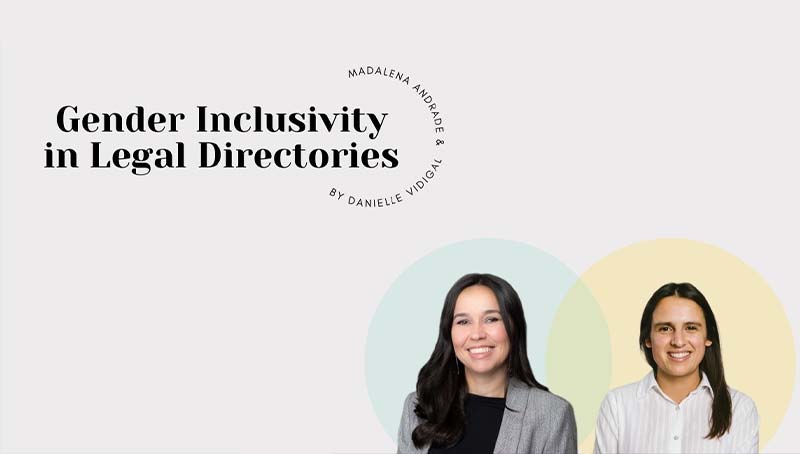To mark International Women’s Day, we decided to look at the issue of female representation in legal directories, particularly within the two market leaders: Chambers & Partners and Legal500. This is a vital issue for the two publications, which rely heavily on credibility and a reputation for excellence, and both have pledged to increase their efforts in portraying a more accurate and inclusive legal profession.
Women are still underrepresented in legal rankings
Female talent has traditionally been underrepresented in annual rankings, and this year makes no exception although some progress can be seen. Chambers & Partners reported[1] a 20% female presence across all rankings (a 5% increase since 2015) and mentioned a 55% increase in women’s presence in USA rankings and a 3% increase in Latin America guide over the last five years (in Honduras, the growth has been a whopping 533%)
Legal500 hasn’t released any official numbers on D&I so far but Georgina Stanley, editor of the publication does mention[2] that in 2021 women in London law firms comprise “just under” 30% of ranked Leading Individuals, 47% Next Generation Partners, and 55% Rising Star associates. These numbers tend to reflect the reality of the wider legal market, with the presence of women in law firms being larger at base levels and narrowing down as we move up to more senior partner positions.
Legal directories can show us the scale of the problem and push for inclusivity
Neither publication has compiled D&I guides with consolidated figures on female representation and it remains difficult to assess the scale of progress achieved in this area. However, both publications are starting to include ‘Diversity and Inclusion’ sections in the most recent submission templates, prompting law firms to describe their efforts in promoting female leaders.
Data is key and directories have access to a wealth of data from law firms across the globe, therefore this recent push to ask law firms to disclose the make-up of their departments could be an important step in drawing an accurate picture of female representation in the profession, especially at senior level. This data will be especially useful and influential if directories decide to publish it alongside the rest of the information provided for every ranked department.
Going one step further, legal directories could do more than just counting women at law firms. They could make sure that providing inclusivity data is mandatory and could encourage reporting by making sure D&I efforts count towards rankings. This would be perhaps the most effective move in increasing and prioritising female recognition.
Moving in the right direction
Although there is more that could be done, legal directories are indeed already pushing for more gender equality in the legal world. Both Chambers and Legal500 have reported training their researchers and editors to use unbiased language when describing female lawyers and both publications organise events on diversity throughout the year. Chambers has recognised firms’ efforts in this field through their D&I Awards for the last few years and their awards reward genuinely innovative programs.
In a recent move, Chambers also announced that they will freeze rankings for a period of 12 to 18 months to account for maternity leave and to stop women being negatively affected by prolonged absences. On its most recent submission template, Chambers is asking firms to identify lawyers who are on or have had “recent parental leave, significant childcare commitments or other part-time working arrangements”, situations that tend to affect, statistically more women than men (in the UK alone there are three times more women working part-time than men).
The numbers we do have available show us that the road towards gender equity in both legal directory rankings and leadership positions within law firms is still quite long. However, the steps being taken by both Chambers and Legal500 are meaningful and going in the right direction. We are confident that both directories can have an important role in paving the way to more gender equality in the legal profession and we fully support their recent efforts to address this issue and move the sector forward.
—–
This article has been written by Danielle Vidigal and Madalena Andrade. They both were part of the editorial team at Chambers and Partners before becoming legal directories consultants at Vidigal Marketing and AGMC, respectively.
[1] https://chambers.com/topics/Diversity-and-inclusion-highlights-Chambers-Global-2021
[2] https://www.legalbusiness.co.uk/news-review/the-legal-500-view-the-gender-agenda-the-rankings-and-firms-making-progress-on-diversity/
